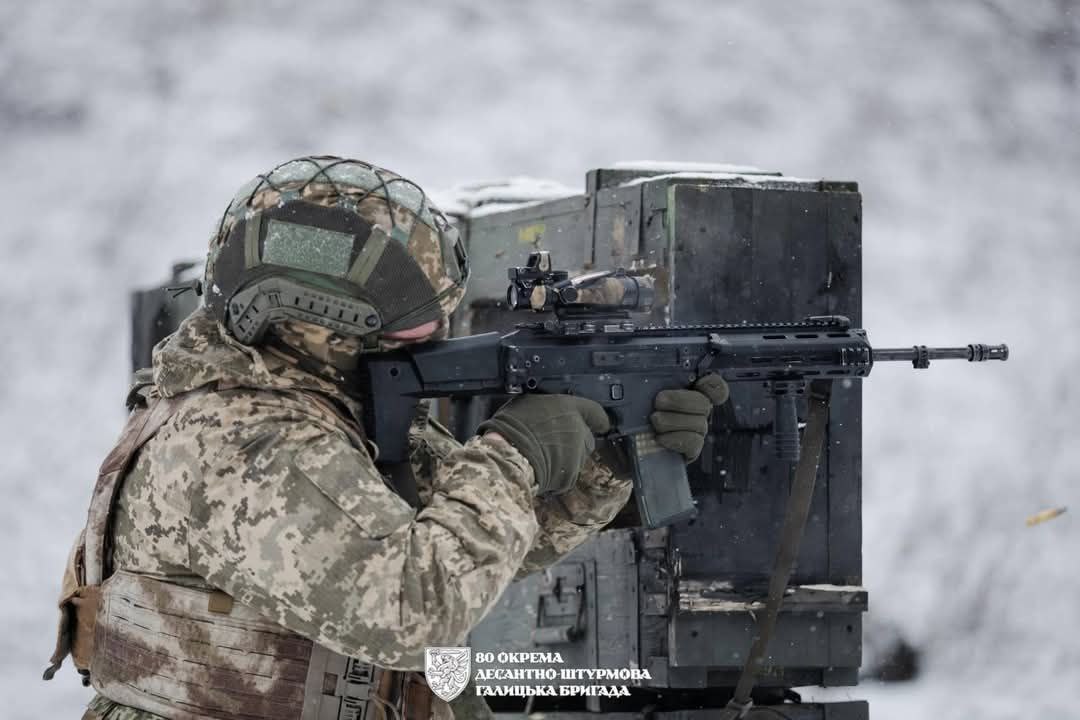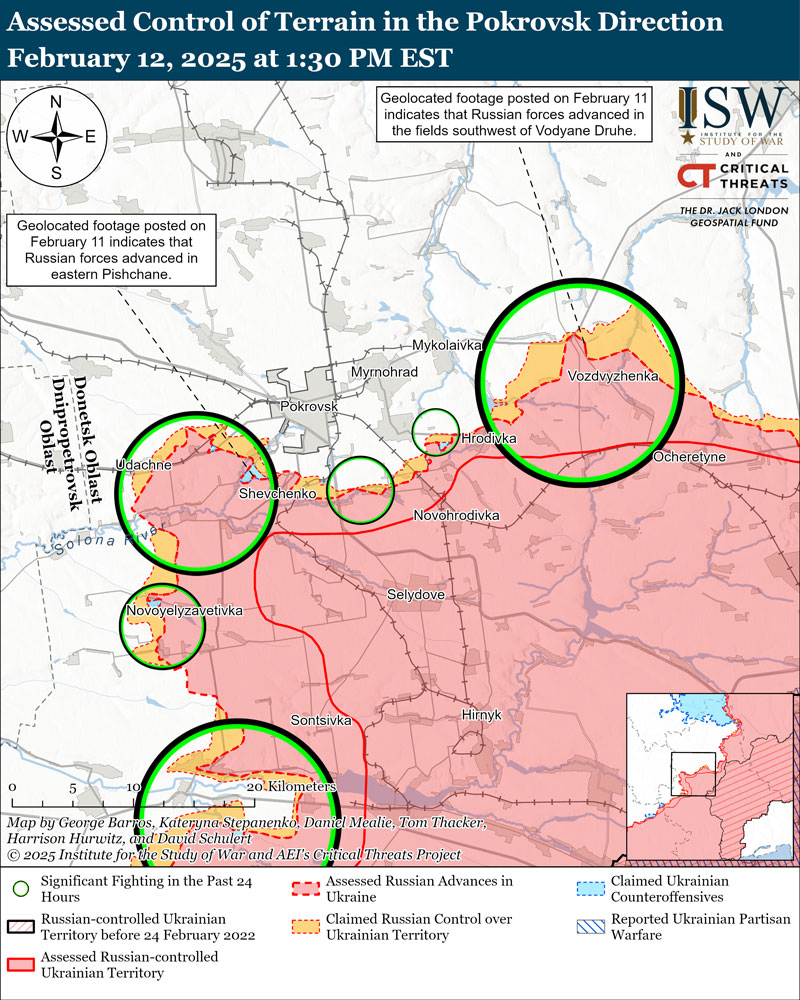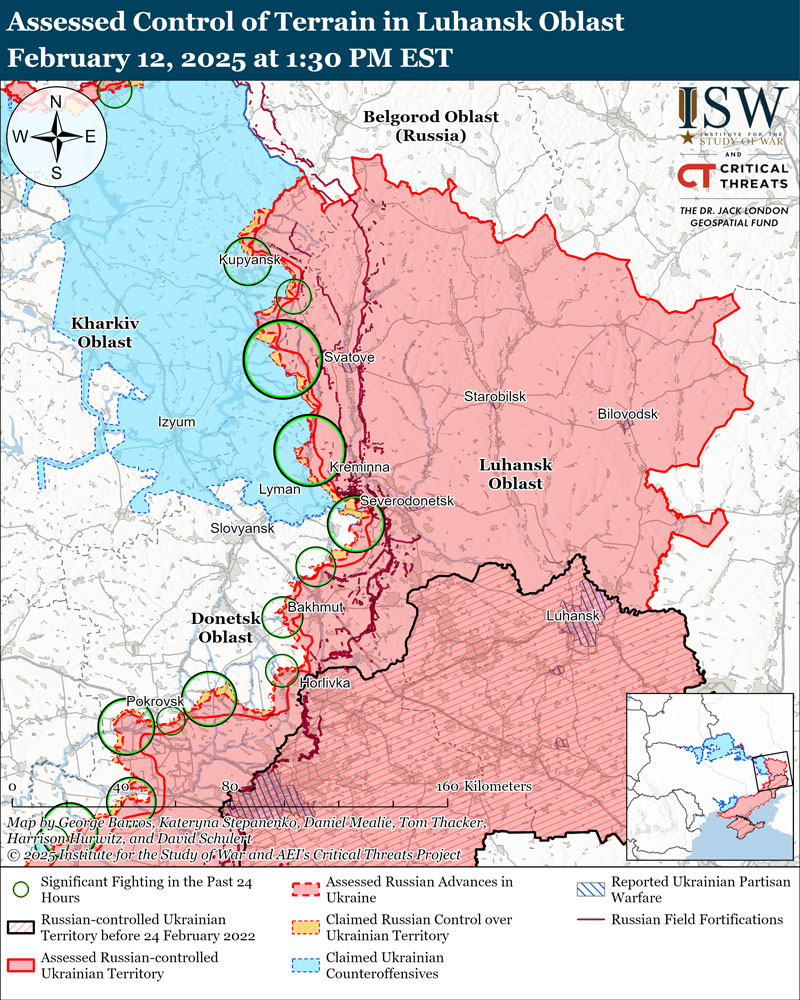Ukrainian forces have launched a series of successful counterattacks near Pokrovsk in Donetsk Oblast, recapturing several settlements, as Russian offensive operations show signs of decreasing intensity.
Declining Russian activity and heavy losses
According to BBC News Russian, the frequency of Russian attacks has steadily declined since the start of 2025. In early February, Russian forces conducted fewer than 100 daily attacks - a level of activity not seen since August. However, the Pokrovsk area remains the most active and dangerous sector, accounting for between one-third and half of all Russian attacks along the entire 1,000-kilometer front line.

In early February, Ukrainian Commander-in-Chief Oleksandr Syrskyi revealed significant Russian losses near Pokrovsk, reporting that Moscow lost 15,000 troops in January alone, with 7,000 of these losses being fatal. This casualty rate represents the highest losses for Russian forces among all front-line sectors, according to General Staff data.
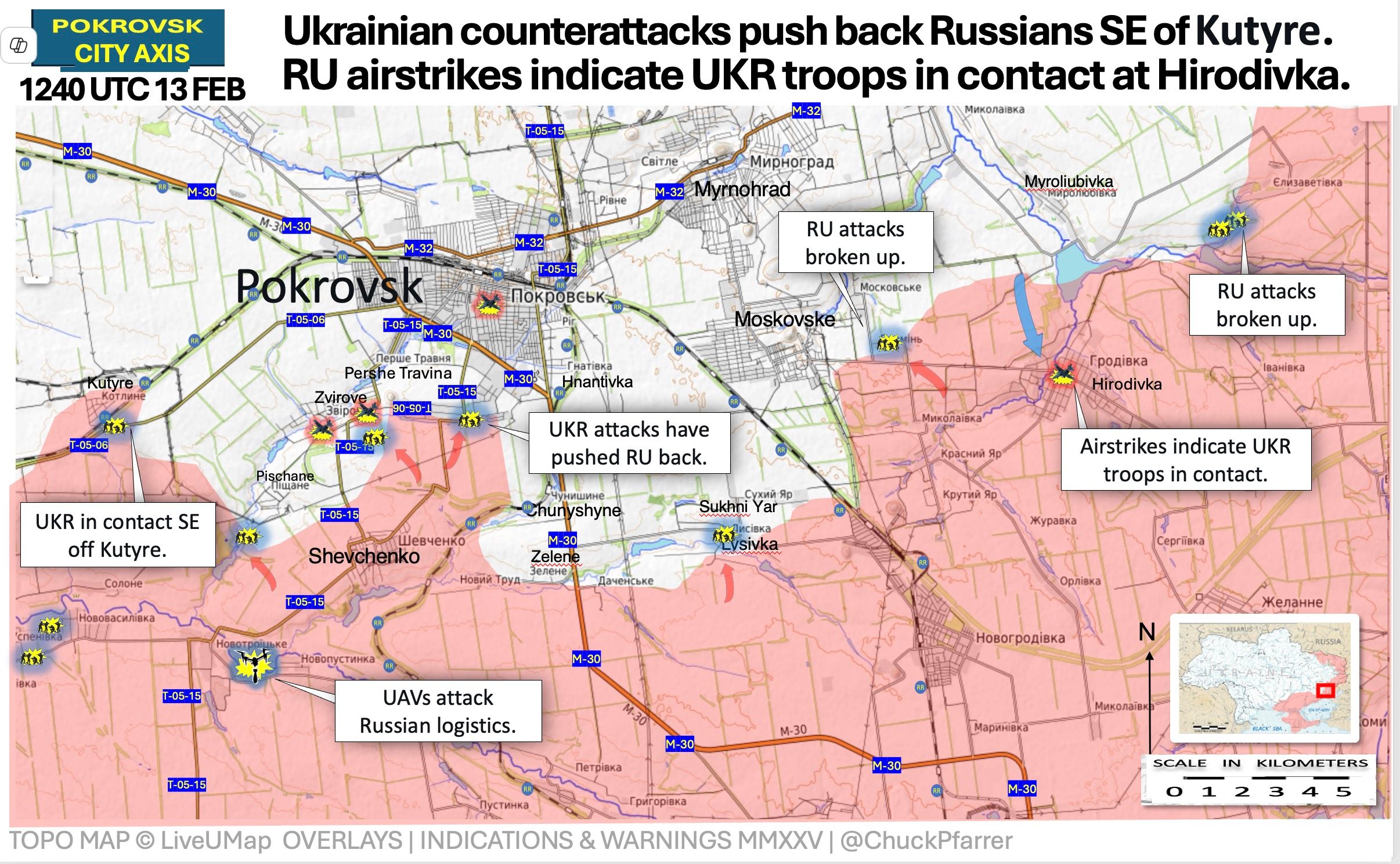
Command changes and Ukrainian advances
BBC News Russian noted that the successful Ukrainian operations followed a late January change in command of the Hortytsia Operational-Strategic Grouping of Forces. General Mykhailo Drapatyi, who simultaneously serves as the Ground Forces commander, took responsibility for this sector of the front, leading to noticeable improvements in defensive operations and counterattack capabilities.
The Ukrainian OSINT project DeepState announced on 10 February that Ukrainian forces successfully restored positions in two critical locations. First, they pushed Russian forces out of Dachenske village south of Pokrovsk, effectively removing the threat to the important defensive node near the Chunisheno railway station. Second, they advanced near Vodiane Druhe east of the city, significantly slowing Russian attempts to cut the Pokrovsk-Kostiantynivka highway. The following day, Ukrainian forces extended their success by reclaiming Pishchane village southwest of Pokrovsk.
On 13 February, TSN reported that Ukraine's 25th Separate Airborne Brigade captured approximately ten Russian soldiers near Sukhyi Yar, as a Ukrainian drone recorded the Russian troops surrendering under a white flag. DeepState noted that "the trend of enemy surrenders is gradually beginning to remind of the pre-counteroffensive times."
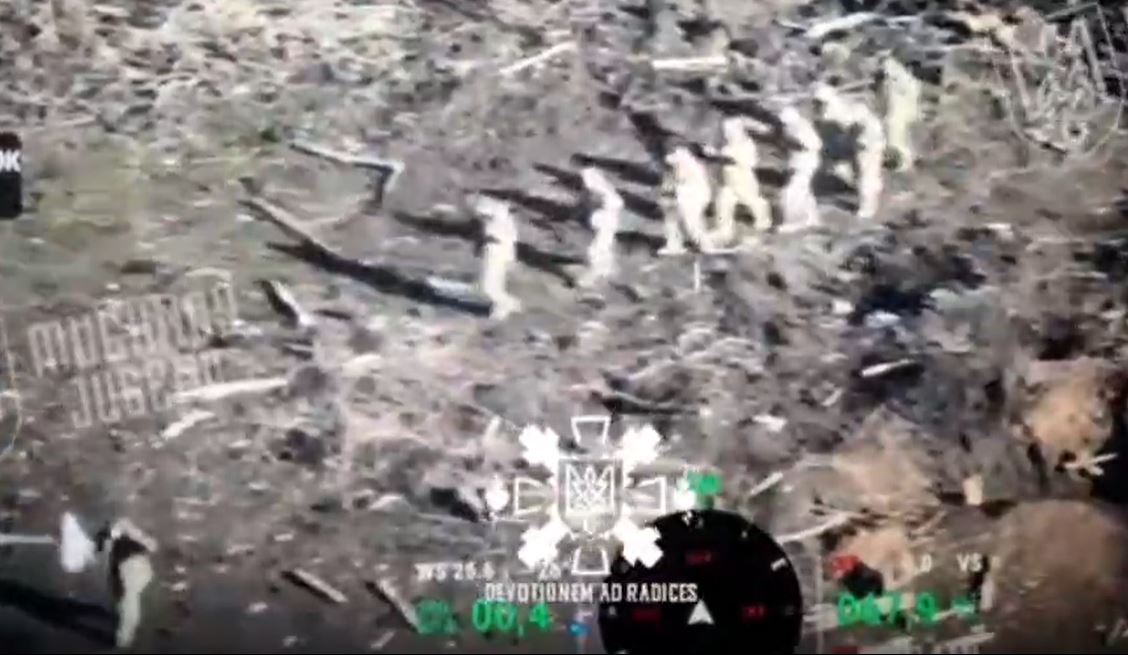
Russian encirclement strategy and tactical approach
Since autumn 2024, Russian forces have been implementing a complex plan to encircle Pokrovsk from three directions - east, south, and west - to sever Ukrainian supply lines, BBC News Russian says.
The operation began with Russian troops reaching the city's eastern outskirts in late September 2024. By late fall, they managed to cut southern routes to Pokrovsk, and in December, they advanced to the southwestern highway near Kotlyne village, approaching the road to Mezheva in Dnipropetrovsk Oblast.
Ukrinform revealed specific details about Russian tactics around Pokrovsk. According to Hortytsia Grouping spokesperson Viktor Trehubov, the Russians employ a distinctive strategy, avoiding direct entry into the city while maintaining a "sanitary zone" around it. Russian infantry groups methodically attempt to capture houses in settlements near the city, advancing clockwise to establish a containment perimeter.
Critical highway
The battle for key infrastructure has intensified, with Suspilne reporting on 13 February that Russian forces lack clear control over the crucial Pokrovsk-Kostiantynivka highway. Despite DeepState marking part of the road as Russian-controlled on 10 February, Hortytsia spokesman Trehubov claimed that active fighting continues in the area with no clear control over the road or surrounding settlements.
"Ukrainian forces are restoring positions in certain directions, while Russian forces are trying to advance and gain footholds, clinging to small settlements and individual positions within them," Trehubov told Suspilne.
Recent advances in the region
The Institute for the Study of War reported on 12 February that Russian forces recently advanced southwest of Vodiane Druhe and in eastern Pishchane, while also making progress southwest of Dachne.
They continue attacks along multiple axes: east of Pokrovsk near Vodiane Druhe, Tarasivka, Yelyzavetivka, and Promin; southeast of Pokrovsk near Lysivka; south of Pokrovsk near Pishchane and Zvirove; and southwest of Pokrovsk near Kotlyne, Udachne, Molodetske, Nadiivka and Uspenivka.
The Russian offensive extends beyond the immediate Pokrovsk area. ISW notes recent Russian advances northeast of Siversk, noerthern Donetsk Oblast, where their forces progressed along Tsentralna street on the western outskirts of Bilohorivka, Luhansk Oblast.
Additionally, both Russian and Ukrainian forces have made advances in Donetsk Oblast's Toretsk area, with Ukrainian forces gaining ground in the Toretska Mine area while Russian forces advanced in northwestern Toretsk.
Operations south of Pokrovsk
Military analyst Kostiantyn Mashovets says that south of Pokrovsk in the former Kurakhove sector renamed as Novopavlika directions of the loss of Kurakhove, Russia has concentrated major forces combined from elements of four armies and two additional larger formations:
- Most of the 90th Tank Division of the 41st Combined Arms Army – "Center" Military Grouping
- 110th and 114th Separate Motorized Rifle Brigades of the 51st Combined Arms Army – "Center" Troop Grouping
- 20th and 150th Motorized Rifle Divisions of the 8th Combined Arms Army – "South" Troop Grouping
- Units of the 36th Motorized Rifle Brigade of the 29th Combined Arms Army, the 39th Separate Motorized Rifle Brigade of the 68th Army Corps, and the 57th Motorized Rifle Brigade of the 5th Combined Arms Army – all from the "East" Grouping.
"By and large, this group is quite comparable to the one that is now trying to “storm” Pokrovsk and its surroundings. However, so far the enemy has had great difficulty advancing in this direction," Mashovets noted.
As Mashovets notes, the 90th Tank Division's command has concentrated its main efforts in this sector, aiming to achieve a "tactically deep" advance westward to simultaneously address two key objectives on the Pokrovsk and Novopavlivka axes:
- Secure the southern and southwestern flanks of its assault grouping operating south and southwest of Pokrovsk.
- Threaten encirclement from the north of the Ukrainian tactical grouping defending the remaining positions of the Kurakhove bridgehead.
The analyst notes that The 90th Tank Division advances slowly, 500–600 meters every two days. Under these conditions, a breakthrough to the Dnipropetrovsk Oblast border seems increasingly problematic for Russian forces.
Mashovets identifies a critical flaw in Russian operational planning. He argues the Russian command "rushed" its advance west of Pokrovsk, launching the operation before securing their southern flank. The operation, in his assessment, should have waited until the complete elimination of the Ukrainian stronghold near Kurakhove. This strategic miscalculation forces Moscow to split its best combat-ready units, particularly the 90th Tank Division, between two opposing directions without achieving complete success in either area. The resulting "stretching" of Russian forces reduces their density, enabling Ukrainian forces to conduct effective local counterattacks.
Civilian impact
Pokrovsk is reportedly almost completely destroyed by daily Russian strikes with guided bombs and drones, making evacuations and humanitarian aid deliveries extremely difficult. Despite this, evacuations of locals continue, Donetsk Oblast head Vadym Filashkin says. Until November, up to 1,000 civilians left daily, though numbers have since dropped. Filashkin says evacuations occur when security and weather permit.
6,960 civilians remain in the city, according to local authorities. Before Russia's full-scale invasion, Pokrovsk had a population of over 60,000.
In January alone, 13 civilians were killed in Russian attacks.
Related:
- Forbes: Ukrainian “dragon drones” melt Russian “turtle tanks” with 3,000°C thermite charges
- Frontline report: Russian forces suffer tremendous losses due to poor planing in failed Donetsk offensive
- Ukraine deploys 200,000 drones monthly to counter 5-to-1 Russian infantry advantage near Pokrovsk, WSJ reports
- Russian forces inch closer to Pokrovsk amid reduced assault intensity
- Frontline Report: Russian armored push near Pokrovsk ends in loss of 9 vehicles within hours
- Russians and Ukrainians advance near Donetsk’s Pokrovsk
- ISW: Russian advances slow despite maintaining high casualty rates

